Key takeaways:
- University student unions foster community, amplify student voices, and enhance the university experience through resources and activities.
- Community networks provide support, collaboration, and a sense of identity, essential for personal and professional growth.
- Engaging students through inclusive discussions, social media, and partnerships with cultural clubs enhances participation and diverse perspectives.
- Measuring the impact of events requires qualitative feedback and monitoring ongoing connections, providing insights for future initiatives.

Understanding university student unions
University student unions serve as the heart of campus life, offering a sense of belonging and community for students from diverse backgrounds. I remember my first encounter with the student union; I immediately felt the vibrant energy, a buzz of voices, laughter, and ideas exchanging in the air. It made me wonder, how could a single space encapsulate so much enthusiasm and potential?
Beyond just social interactions, student unions play a crucial role in amplifying student voices and advocating for important issues. When I got involved in one of the committees, I saw firsthand how our discussions influenced university policies. It was empowering to know that our collective opinions could lead to real change. Isn’t it fascinating to think that mere conversations can shape the direction of our educational experiences?
Additionally, student unions provide numerous resources and activities that enrich the university experience, from organizing events to facilitating clubs. I remember attending workshops that not only taught me practical skills but also connected me with individuals who shared similar passions. Have you ever thought about how these opportunities can significantly impact your journey?

Importance of community networks
Community networks are essential in fostering a sense of belonging, especially in a university setting. I recall how joining a local study group transformed not just my academic experience, but also my social life. The connections I made turned into friendships that lasted well beyond my university days. Isn’t it incredible how shared challenges can bring people together?
Moreover, these networks provide a platform for collaboration and support, vital for personal and professional growth. When I shared my interests in entrepreneurship, I found mentors and peers who were eager to offer guidance. That kind of support system can truly make a difference when navigating the uncertainties of university life. Have you ever thought about the power of having someone to lean on during tough times?
Lastly, community networks help to create a sense of collective identity, something that became evident during our cultural events. Watching different groups come together to celebrate their uniqueness made me appreciate the diversity within our campus. It was a reminder that we are stronger together, each person contributing to a rich tapestry of experiences and perspectives. What would our university life look like without this connection?
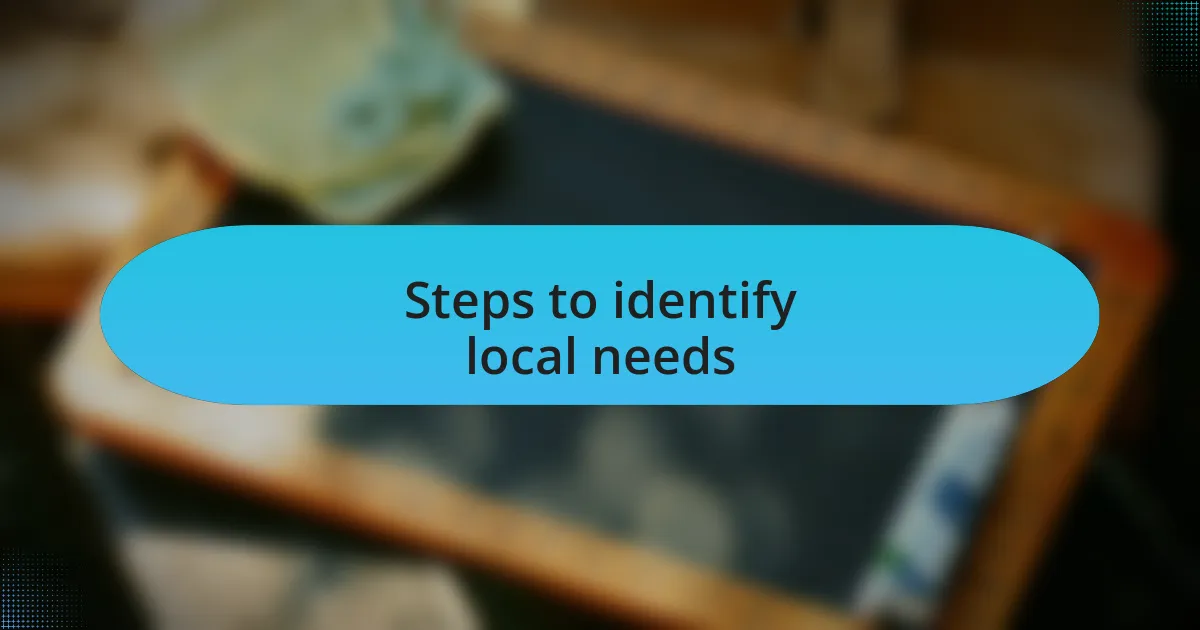
Steps to identify local needs
To identify local needs, start by engaging directly with the community. In my experience, attending local meetings was invaluable. I sat in on discussions about housing, transportation, and cultural events, listening carefully to what people shared. The insights I gained there helped me understand what issues truly mattered to my neighbors.
Next, consider conducting surveys or informal polls. When I organized a simple online questionnaire, I was surprised by the variety of responses. People opened up about their struggles and aspirations in a way I hadn’t anticipated. This feedback not only highlighted specific local needs but also fostered a sense of ownership and investment within the community.
Finally, don’t underestimate the power of one-on-one conversations. I often found that a casual chat over coffee could reveal deeper insights than a structured meeting. Listening to someone’s story can illuminate challenges and opportunities that statistics might overlook. Have you ever noticed how personal connections can reveal needs that are not immediately obvious? It’s all part of the journey to truly understanding and serving your community.
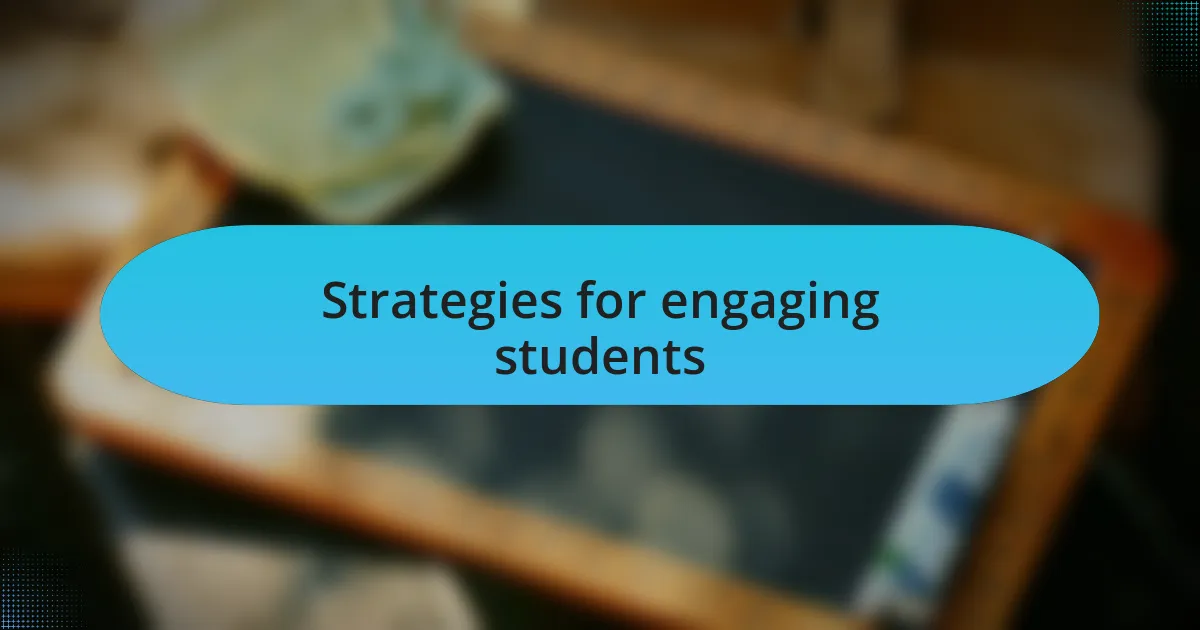
Strategies for engaging students
Engaging students requires creating an environment in which they feel their voices are heard and valued. I remember organizing a series of themed discussions around topics that resonated with students—mental health, career readiness, and extracurricular activities. These gatherings transformed into vibrant exchanges where I witnessed students opening up about their experiences, and the enthusiasm that emerged was contagious. How often do we underestimate the power of a shared space for dialogue?
Social media can be a game-changer for engagement as well. I’ve implemented platforms like Instagram and Facebook to create polls and open forums, encouraging students to share what they care about most. One time, after posting a question about upcoming events, I was overwhelmed by the response. Students not only voiced their preferences but also suggested ideas I hadn’t even considered! It was a reminder that giving students a platform can unlock creativity and involvement in ways we could never anticipate.
Lastly, partnering with cultural and interest-based clubs has proven effective in reaching different student demographics. I recall working closely with the international students’ association to host a cultural showcase. It brought together students from diverse backgrounds, fostering connections and mutual respect. This experience taught me that collaboration amplifies impact—how many more voices could we lift by joining forces? Engaging students seems less daunting when approached through collaboration and shared objectives.
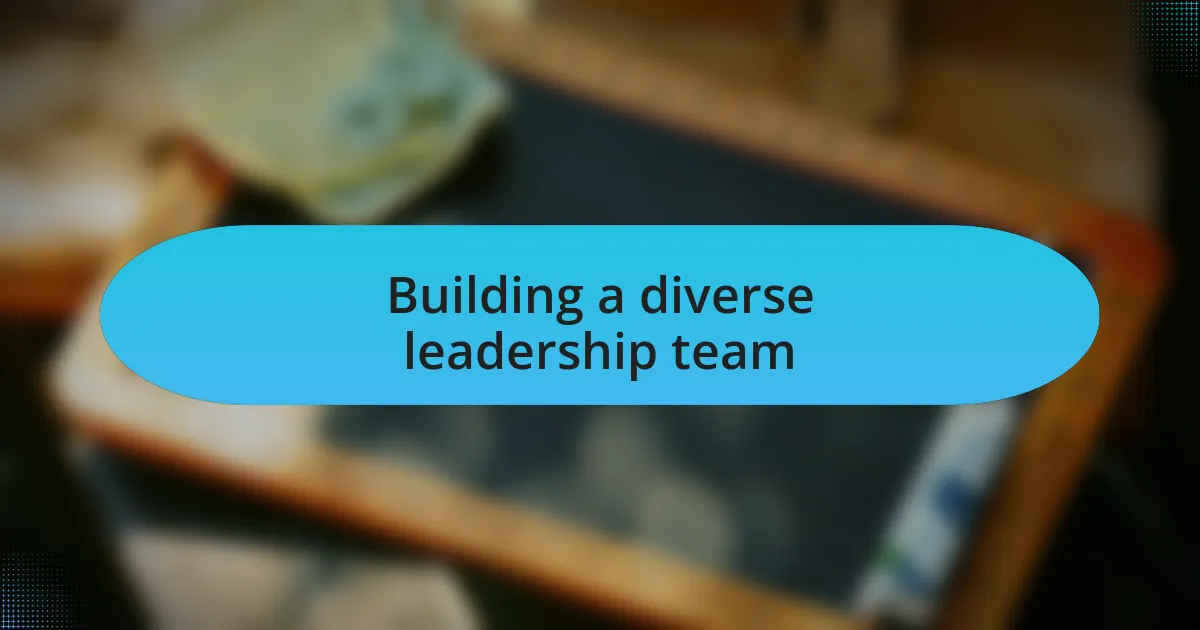
Building a diverse leadership team
Creating a diverse leadership team goes beyond merely ticking boxes; it’s about fostering a rich tapestry of perspectives and ideas. When I first started building my team, I made it a priority to actively seek out members from different backgrounds, identities, and experiences. I remember reaching out to a student leader from the + community, who brought a fresh lens to our discussions. How often do we overlook voices that could profoundly shape our initiatives?
In my experience, diversity in leadership also cultivates a culture of inclusivity that resonates throughout the entire organization. One notable moment occurred during a brainstorming session where a member from a different cultural background shared their approach to community engagement. This sparked a lively conversation and led to a groundbreaking project that wouldn’t have emerged without that unique perspective. Isn’t it fascinating how one voice can shift the trajectory of our goals?
Moreover, embracing diversity requires ongoing effort to ensure everyone feels empowered to contribute. I’ve initiated regular feedback sessions where team members can express their thoughts openly. This not only strengthened our team dynamics but revealed hidden talents and insights that might otherwise remain dormant. When was the last time you actively listened to diverse viewpoints? Such practices reinforce the notion that a varied leadership team can drive innovation and create lasting connections within the community.
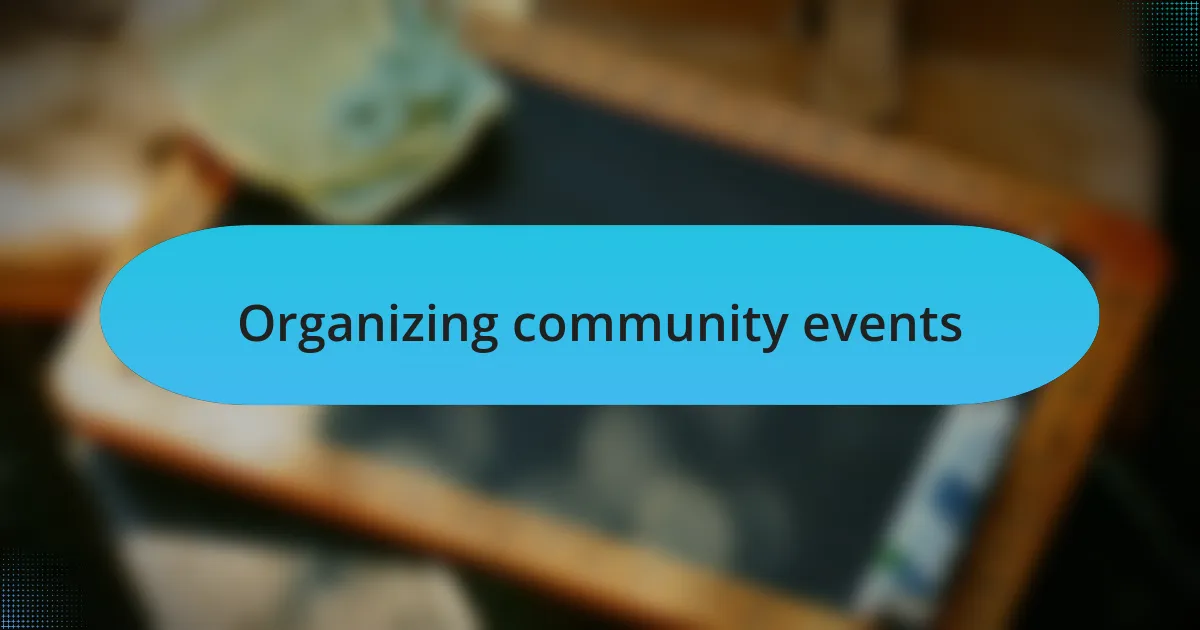
Organizing community events
Organizing community events starts with a clear vision of what you want to achieve. I recall the thrill of planning our first cultural festival—I’d never felt so energized and overwhelmed at the same time! Drawing from various student organizations, I learned that the key was to listen closely to what the community desired. How often do we dive headfirst into planning without pausing to gather input?
I personally reached out to students from different cultural backgrounds, inviting them to co-create the event. One student, who was passionate about her heritage, suggested incorporating traditional music, which significantly enriched our program. Witnessing attendees dancing to unfamiliar tunes was a poignant reminder of how events could bridge cultural gaps. Have you ever witnessed the magic that occurs when different cultures come together to celebrate?
As the event approached, I felt the pressure increase, but I realized that collaboration made everything more manageable. Delegating roles to my team empowered them to take ownership, revealing unexpected leadership skills among peers. It’s incredible how community members can step up when given the chance. What innovative solutions might emerge when you involve others in organizing an event? Embracing collective efforts not only eases the workload but also fosters a shared sense of accomplishment that strengthens community bonds.
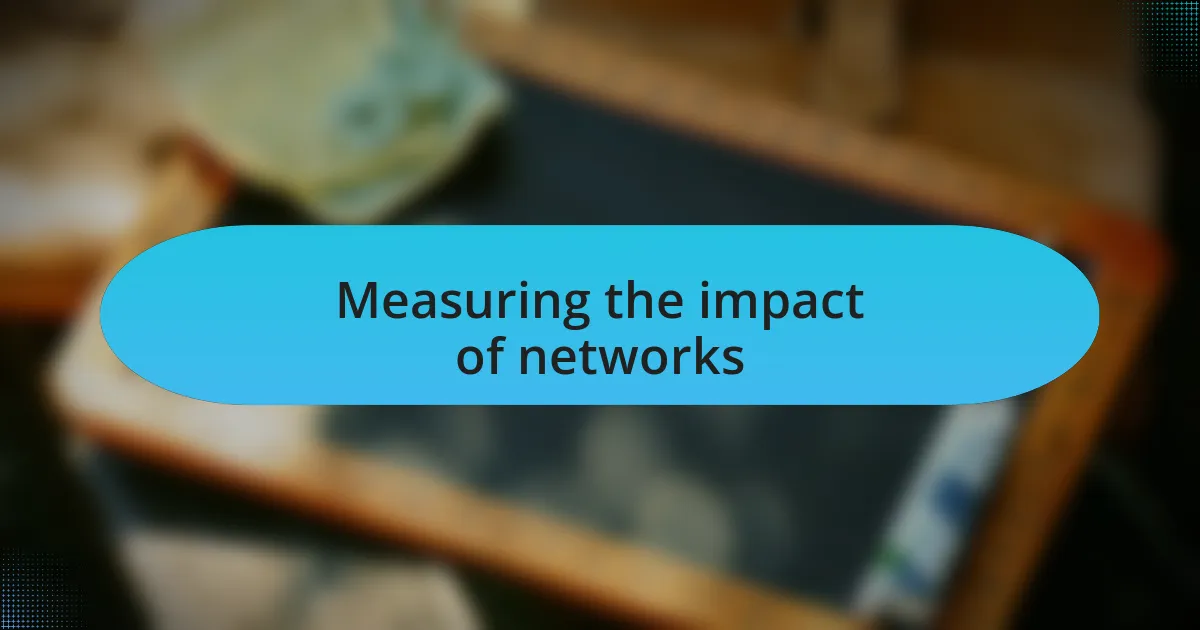
Measuring the impact of networks
Measuring the impact of networks is often more nuanced than it appears at first glance. I recall a time when we wrapped up our first event and I was overwhelmed by the positive feedback, but I was left wondering—how do we quantify this enthusiasm? Simple metrics like attendance numbers provide some insight, but they don’t capture the deeper connections formed during the event. Have you ever thought about the stories behind those smiles and conversations?
In my experience, using surveys to gather qualitative feedback proved invaluable. After one networking event, I sent out a quick survey asking attendees what connections they made and how they felt afterward. The responses painted a vivid picture of burgeoning friendships and collaborations that might not have happened without our efforts. Isn’t it fascinating how one event can ripple through a community and foster personal growth?
Another effective approach was observing the continued engagement post-event. I began tracking how often participants connected on social media or attended follow-up gatherings. It was encouraging to see that many of them maintained their connections, showing a tangible impact on community dynamics. Have you considered how measuring such interactions could inform future initiatives? Ultimately, it’s these insights that help refine our strategies and make our networks even more vibrant.